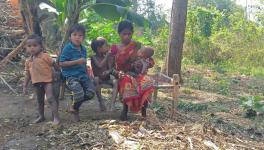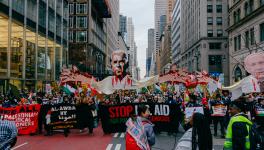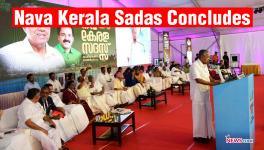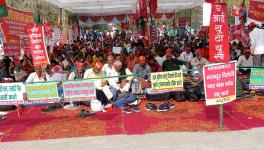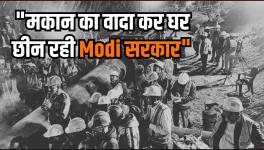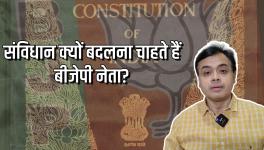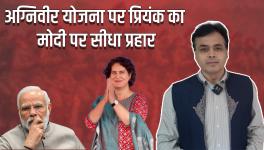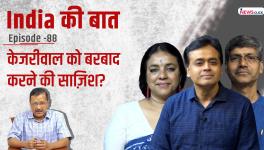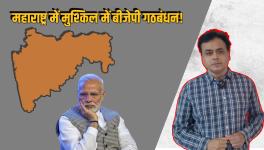Modi Sings His Government’s Hosannas, Things Keep Falling Apart
Since the lockdown was imposed on India from midnight 24 March, there has been great uncertainty, bordering on chaos. If you were going exclusively by what Prime Minister Narendra Modi has been telling the citizenry, India’s performance has been nothing short of stellar. In fact, it has been a mix of inaction, leading to the loss of valuable time; random action leading to untold privation for the vulnerable; and infantile symbolism.
On 8 April, Modi convened an all-party meeting at which he described the current situation as being “like that of a national emergency” and categorically ruled out the possibility of lifting the lockdown. “The removal of restraints has to be sequenced and there cannot be one single exit plan,” he said. It appears that a decision will be taken on 11 April during—or following—a further round of consultations with chief ministers. But none of this would have been known to the public unless an audio clip had been leaked, which the Prime Minister’s Office emphatically deplored.
Earlier, on 2 April, during a videoconference with some chief ministers, Modi had been clearly ambiguous. He had reportedly told them that the Centre neither wanted the lockdown to continue, nor was it prepared to allow normal business to resume. He had asked for suggestions for an “exit strategy” to help formulate a common, meaning countrywide, plan.
With less than a week to go for the lockdown deadline to pass, citizens, already either on edge or in desperate straits, have no idea what will hit them in the next few days. This is a major problem. While it is important to converse with chief ministers and Opposition leaders, it is equally important to give citizens a sense of what to expect. That proper and adequate communication and messaging is essential is abundantly demonstrated by the announcement of the lockdown itself, which gave people four hours to prepare themselves. We seem headed in the same direction. All we are being told is to bang on plates and light candles or lamps. As things stand, citizens will not know exactly what they face until 12 April, when a decision will be sprung on them, giving them a few days or just hours to retool their lives.
You could hardly blame the citizens, especially those facing starvation, if they look to 14 April with foreboding. The Prime Minister, apparently, does not share feelings of despondency and desperation. On 6 April, Modi prepared citizens for a “long battle” without specifics for them to even clutch at and delivered a self-congratulatory panegyric to Bharatiya Janata Party (BJP) workers on the 40th anniversary of the party’s founding.
“The speed with which India took decisions in a comprehensive and holistic manner is not only being talked about in the world but has been praised by the World Health Organization,” Modi told BJP workers. Such self-congratulation borders on the criminally complacent, when we consider the situation on the ground.
He praised India for being among those countries that had understood the seriousness of the pandemic early on and taken steps like thermal screening at airports, evacuation of Indians abroad and bans on flights from select countries. It is no one’s case that the government was rocking on its heels like the US government was. Some of the early decisions were important, but from a holistic perspective, the response has been shambolic, notwithstanding the WHO’s praise, which was delivered before any assessment of the lockdown could be made and which could not possibly take into account the chaos that ensued.
Well into the third week of the lockdown, no “comprehensive” or “holistic” or coordinated response has been offered to migrant workers stuck in their workplaces without a living or stuck in transit in overcrowded and insanitary “camps”. Those stuck at their places of work don’t have the wherewithal to buy basic provisions and, as has been reported in The Telegraph, many of them dare not venture out for fear of being beaten or lynched by local residents who blame them for spreading the Covid-19 disease.
On 7 April, in response to a plea in the Supreme Court seeking payment of wages to migrant workers, the Centre’s counsel said: “We are looking into whatever complaints are received. A 24-hour helpline (has been) set up…”. He also said that the Centre was instituting measures to ameliorate the hardships of migrant labour. Ah yes, of course.
The Chief Justice of India (CJI) redefined the meaning of the phrase “cold comfort” at the hearing when he asked Prashant Bhushan, the counsel pleading the case, Marie Antoinette-style, why the migrant workers needed wages when they were being given food. Bhushan managed to point out that 40% of migrant workers were stuck in their workplaces and needed to send money to their families; that the food when and where it was being provided to those in “camps” was often of poor quality; and, in effect, that living in crowded shelter homes was contrary to the logic of the lockdown because it does not allow for social distancing (which Modi and the bureaucracy constantly reiterate is a fundamental need to prevent the transmission of the virus.) The CJI declined to “supplant the wisdom of the government with [its] wisdom”. Why ever not?
The unorganised sector which employs close to 90% of the Indian workforce is mostly shut, which means that a huge number of people are without a livelihood. On 8 April, a report prepared by the International Labour Organization said 400 million (40 crore) people could fall deeper into poverty. That works out to around 30% of the population.
Take these two conditions together and look at what the government is offering them by way of not “compensation”, but the entitlement to bare life. The sum of the government’s relief to the indigent and those starving, or close to it, has been crediting Rs. 500 into the Jan-Dhan accounts of just over 40 million (4 crore) women on 3 April. Two more tranches of such payments will be made in the next two months. It was reported at the end of March that Niti Aayog Vice Chairman Rajiv Kumar had said that the government could consider suggestions for direct cash transfers to unemployed workers including migrants. Over a week later, not a peep, while people live with hunger and prepare to starve to death.
Then, it was only after farmers expressed concern over the harvesting of the Rabi crop and the sowing of the Kharif that the government “clarified” that farming operations were exempt. By then, however, the migration of agricultural workers back to their homes (for instance, from Punjab and Haryana to Bihar and Uttar Pradesh) had begun, which still constrains harvesting operations. Second, the breakdown in procurement operations and the destruction of supply chains has hit farmers hard in some places. It has been reported that in West Bengal the suspension of suburban and intra-state railway services have forced farmers into distress selling after harvesting a bumper crop. Procurement operations are not filling the gap and other forms of transportation have not been arranged adequately. Middlemen are making the most of the situation and retail prices remain high. Chief Minister Mamata Banerjee needs to take the initiative quickly with whatever resources are available.
While the poorest face an apocalyptic shock, the tribulations of the general populace have been compounded by destroyed supply chains. It has been reported that 350,000 inter-state lorries are stuck on highways carrying Rs. 35,000 crore worth of goods ranging from vehicles to industrial raw material such as chemicals, steel and cement. Drivers and helpers have left the vehicles, being bereft roadside of the essentials of life, including food. Were these trucks to reach their destinations, it wouldn’t help much, since the truckers wouldn’t find workers to unload the goods delivered. Another report, specific to Kolkata, said that the absence of last-mile connectivity, in the shape of small goods vehicles, and loaders/unloaders, had driven up prices of essentials.
More than two weeks have gone by and healthcare workers still find essential equipment in short supply; and the ambit of testing has not been amplified, which means we cannot really be sure of the extent of transmission and infection, which further means that we cannot aggressively follow containment measures.
It is possibly true that even if our numbers under-represent the scale of the problem, India will be spared the horrors that have visited or are visiting Italy, Spain, the UK and US and other countries. That will, nevertheless, have less to do with the government’s “comprehensive and holistic” response and more to do with virological and epidemiological factors. It is imperative, thus, that instead of showering encomia on his government, meaning himself, the prime minister gets his act together.
In doing this, two considerations should be kept in mind. First, when a decision on the lockdown is finally taken, it must be remembered that India is an agglomeration of an incredible large number of local conditions. So, when Modi says the lifting of the lockdown will be staggered (2 April), states should have the autonomy to relax the lockdown keeping local contingencies in mind, albeit in a coordinated manner.
Second, the pandemic has provided an opportunity, indeed an imperative, for Central and state governments to massively augment the country’s public health facilities, from almost non-existent to top of the line, so that even if we are not hit by an epidemic all citizens have access to proper healthcare.
As of now, for instance, tuberculosis, a treatable disease, kills hundreds of thousands of people every year—4,40,000 in 2018, up from 4,10,000 in 2017. We need a public health service that will not allow such things to happen. And, it is not that difficult: since 2015-16, spending on public health has been between 1.2 and 1.8% of the gross domestic product (GDP). The ambition, if you can call it that, is to raise that to 2.5 % of GDP by 2025.
In the first place, why 2025 and why 2.5 %? In the second, at the current rate of progress even that appears unattainable. The Covid-19 pandemic response should include the ambition to increase it to whatever percentage it takes now, as a part of the government spending package to jump-start the economy. That is not a pipe dream.
The author is a researcher and freelance journalist. The views are personal.
Get the latest reports & analysis with people's perspective on Protests, movements & deep analytical videos, discussions of the current affairs in your Telegram app. Subscribe to NewsClick's Telegram channel & get Real-Time updates on stories, as they get published on our website.









